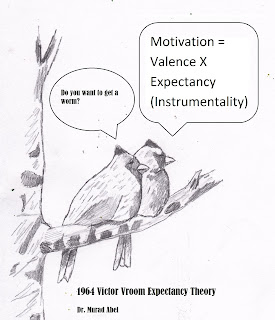Much has been written about executive pay and there appears to be a natural distrust of rapid growth in compensation during a recessive period of history. Some may argue that executive pay has risen too far in recent decades while others argue that the pay is warranted based upon performance. We can be sure that pay has risen substantially over the past few decades and this is not necessarily a bad thing as long as the performance metrics are accurate and reflective of actual performance. How that performance is measured becomes a key concern.
Like employees, executives need motivation and incentives to perform at their optimal level. However, such performance should be based on their actual contribution to the organization versus a quick in and out strategy. Improper metrics can lead to high pay and low performance situations that damage the financial performance of an organization and the employ-ability of those who work for them.
Because there is a natural distrust of higher income individuals it is beneficial to use transparency in executive compensation to reduce this resentment. To be transparent helps people understand how and why the pay was earned and the overall criteria that must be fulfilled to earn it. People who generally understand why and how people earn certain income feel a greater sense of equity and less frustration. Few would have a problem if the executive left a firm stronger than when he or she was hired.
Some tips on executive pay have been offered (Research and Markets, 2010):
-Ensure that pay is linked to long-term firm value.
-Compensation should not encourage high risk decisions nor limit risk-taking when warranted.
-Performance measures should reflect quality and quantity of earnings.
-Choose proper criteria for the metrics.
-Understand the benefits and detractors of stock-based incentive pay.
Sankey (2011) states that including a comparative analysis of peer groups by size, revenue, industry, geography and other factors would help in balancing out compensation. Using a battery of compensation based upon stock value, short and long term revenue streams, debt ratios, comparative firm performance, and industry analysis helps round out the performance metrics. The problem associated with using multiple metrics is its complexity.
Over reliance on stocks in the analysis fosters short-term thinking. For example, if a firm runs into problems the first decision an executive may make is to cut overhead as quickly as possible. Even though this may be necessary to stabilize a firm, waste and inefficiency should have been removed from a well-run organization long before the crisis developed. Operational improvements should have been a continuous process and embedded within the workplace expectations.
The other problem is that dramatic cost cutting should occur in the case of realignment to market realities. It is not a strong solution in and of itself. Cost cutting when necessary, operational improvements, and then building of new revenue streams is a stronger marker of proactive thinking. Shareholders should be rewarding long-term thinking and proactive problem solving. An executive that can stay ahead of the curve and can limit the negative influences of market difficulties is certainly well worth his or her pay.
It is possible to use the comparative industry analysis for base salary development. Incentives are offered for improvements in stock performance, revenue stream generation, debt ratio improvement, and overall firm growth when compared to other companies in the industry. A battery is more difficult to develop but offers a balanced approach to compensation based a wider analysis. Yet using a strong analysis of performance will help ensure that pay reflects performance and creates greater levels of trust that decisions being made are truly in the best interest of the organization and its stakeholders.
Research and markets offers report: The new standards:
Methods for linking business performance and executive incentive pay. (2010). Manufacturing
Close - Up, Retrieved from http://search.proquest.com/docview/746331985?accountid=35812
Sankey, D. (2011, Aug 18). Executive pay under the
microscope; corporations have become more open about salaries. Prince George
Citizen. Retrieved from
http://search.proquest.com/docview/884442609?accountid=35812
